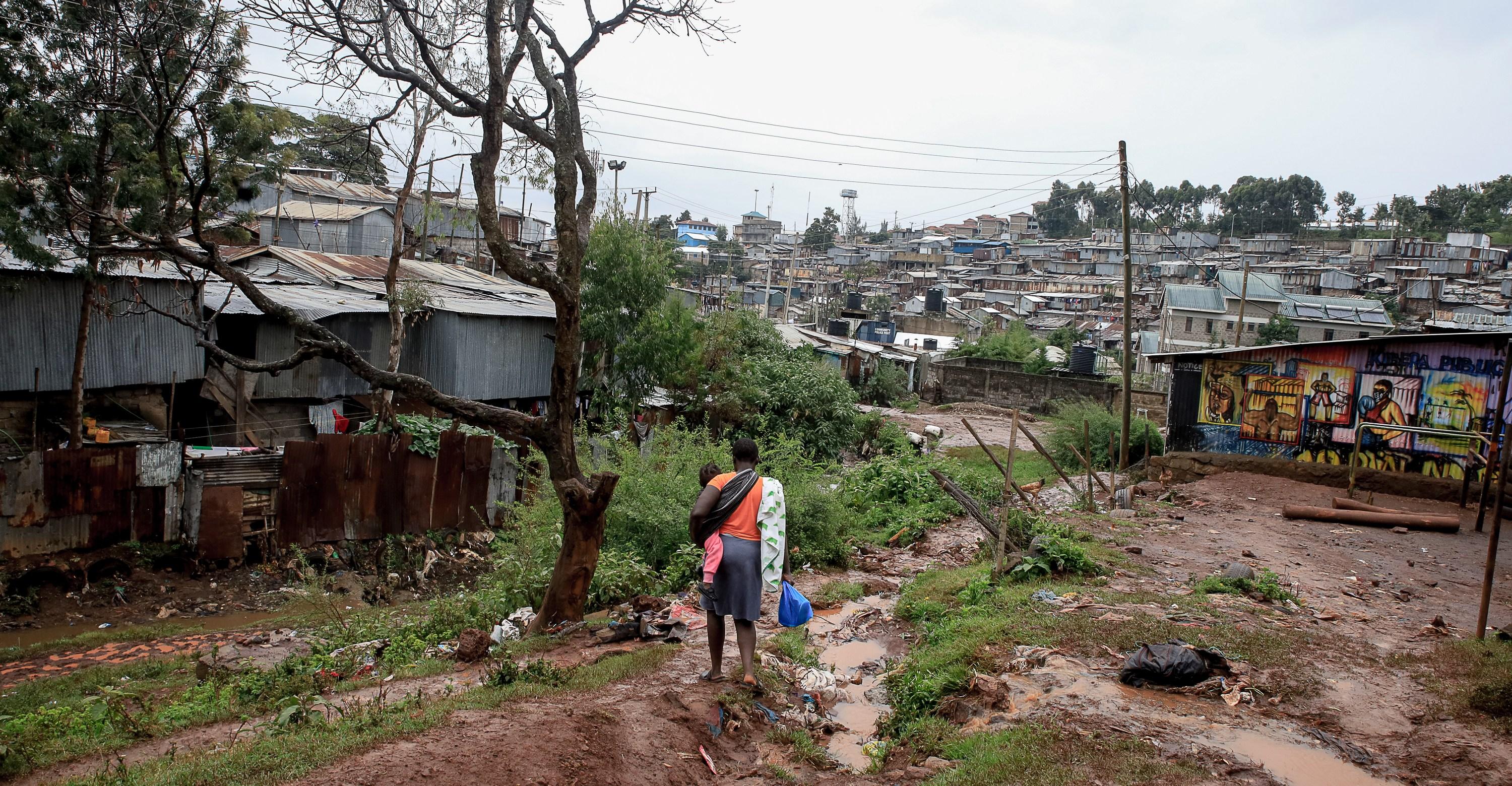There’s less meat at this year’s climate talks. But there’s plenty of bull.
Meat and dairy are driving the climate crisis. Why won’t world leaders at COP28 do anything about it?


Over the next two weeks, an estimated 70,000 people will gather in Dubai for the United Nations COP28 summit. It’s the world’s largest and highest-stakes climate conference, where world leaders gather every year to assess the state of global warming and set targets to slow it down.
As attendees break for meals between meetings, negotiations, and panel discussions, they may notice one striking difference between COP28 and past UN climate conferences: There won’t be much meat on the menu. After a months-long effort by the youth-led Food@COP coalition, the United Arab Emirates environment minister, Mariam Almheiri, announced last month that two-thirds of the food served at the event will be plant-based.
“We know that our food systems are intrinsically linked to the fate of our natural world, and so we have made the progressive decision to ensure that we explore how the catering provided across the event can be responsible and climate conscious,” Almheiri said in a press release.
Almheiri was alluding to a fact often overlooked in climate discussions: One-third of global greenhouse gas emissions can be attributed to food, with meat and dairy accounting for the lion’s share of it but providing just 18 percent of the world’s calories. Meat and dairy production are also leading causes of other environmental ills, including deforestation, biodiversity loss, pandemic risk, and water pollution. Dairy production alone emits more greenhouse gases than global aviation. Plant-based foods typically have a much smaller carbon footprint, and require far less land and water.
:no_upscale()/cdn.vox-cdn.com/uploads/chorus_asset/file/25120956/WAM34948.jpg)
COP’s catering move marks a notable change from the meat-heavy menus typically found at the annual conference, which some have criticized as misaligned with its very goal. But a plant-based shift is unlikely to be found where it would count the most — in the conference negotiations where climate targets are set.
As greenhouse gas emissions from animal agriculture have become increasingly difficult to ignore, global policymakers now stand at a fork in the road on how to address them. Numerous environmental scientists, including some who’ve published studies on the matter for the UN, have called on wealthy countries to cut back on meat and eat more plant-based meals — a sure way to slash agricultural emissions, but politically challenging.
Down another path lies the more politically palatable, yet far less effective, approach of continuing to eat record amounts of meat in the West while deploying a host of technologies and farming practices, each of which can only marginally shave off livestock emissions.
The world needs a mix of both approaches, but policymakers, out of political expediency and corporate capture, are barreling down the second path, a choice they’ll likely come to regret as climate change intensifies.
“We have only one planet, and we’re not going to be able to feed everyone with the diet of the Europeans,” said Raphael Podselver, director of UN affairs for the nonprofit ProVeg International.
And certainly not with the diet of Americans, who eat almost 70 percent more meat per capita than Europeans, and 200 percent more than the global average — so much that if the US sustains its current level of meat consumption and doesn’t change its farming practices, while the energy and transportation sectors decarbonize, agriculture could become the biggest source of America’s emissions by 2050. That would be a climate travesty, and one that could be averted — if only American and other world leaders were willing to address the cow in the room.
Why rich countries won’t commit to eating less meat
COP28 will dedicate more attention to food emissions than previous COP summits, including a few panel discussions on plant-based eating and meat alternative technology. The UN will also launch a new report that will call for, among other priorities, lowering meat consumption in rich countries in order to improve public health and lower agricultural emissions. But some environmental and animal welfare advocates worry the topic will get short shrift at COP’s negotiations.
“Meat and livestock — it’s just not really a focus or discussion point for the main negotiated process at all,” said Lana Weidgenant, a campaigner for ProVeg International who worked on the COP28 menu effort.
There are a few ways countries set climate targets at COP. The main one is through a country’s Nationally Determined Contribution (NDC), a plan that outlines how they will mitigate greenhouse gas emissions and adapt to climate change, and how progress will be monitored. According to the UN’s Food and Agriculture Organization (FAO), only a few countries mention making diets more sustainable in their NDCs — and they’re all low- and middle-income countries that already eat relatively small amounts of animal products.
Another avenue nations use to set climate goals at COP is through joint work programs, in which countries come together to coordinate on specific issues. One focuses on agriculture, but at last year’s COP, there was no mention of shifting diets to be more plant-based — only of tinkering with how farmed animals are raised as a means to reducing emissions.
Reached for comment on whether the US will propose shifting diets to be more plant-based or investing in meat alternative technologies at COP28, the US Department of Agriculture didn’t directly respond, but pointed Vox to its investments in so-called “climate-smart” farming practices, like paying farmers to plant cover crops and improve manure management, through the Inflation Reduction Act. But these are unlikely to make much of a dent in emissions and in some cases, could further expand livestock production.
For example, as part of its climate-smart agriculture program, the US is funding meat giant Tyson Foods to develop “climate-friendly” beef. Neither the USDA nor Tyson have disclosed what makes it “climate-friendly,” a label that might cause people to eat even more beef — which has the highest carbon footprint of any food — and thereby further increase agricultural emissions.
:no_upscale()/cdn.vox-cdn.com/uploads/chorus_asset/file/25120847/AP21299449866313.jpg)
Canada’s agriculture agency pointed Vox to its significant investments in developing the country’s plant-based protein industry, but didn’t directly respond about its NDC or agricultural negotiations. The agriculture agencies of the United Kingdom and Australia didn’t respond to requests for comment.
The European Commission (the EU’s executive branch) pointed to an updated version of its NDC and recent remarks made by its climate action commissioner, each of which calls for emissions reductions in agriculture but don’t contain any specifics on how that could be achieved.
The COP28 “Leaders Declaration” on sustainable agriculture has received a lot of buzz and is expected to be signed by close to 100 world leaders. But it won’t do much — it merely commits governments to include agriculture in their NDCs by the time COP30 is held in 2025, and it doesn’t name any specific actions, nor any mention of livestock emissions and plant-based diets.
The disinterest from Western governments in shifting diets isn’t surprising — meat remains the third rail of climate politics. It tastes good, it’s become a mainstay of Western diets, and it’s become linked to ideals like prosperity and masculinity. Taking it off the menu to help save the planet isn’t politically popular, so even eco-minded politicians, environmental activists, and climate reporters largely avoid the issue.
“Countries are realizing now at least that they have to include food systems within the NDCs — we’re seeing some progress around that,” Podselver said. “But there is still a lack of connection with the key topic, which is of course livestock, and I would say the rebalancing of protein intake between the [global] North and the South.”
Podselver said that in his conversations with European COP delegates, there’s acknowledgment that the West needs to cut back on meat, but it’s rarely said publicly due to fear of being attacked from “all corners.” From the US to Spain to the Netherlands and beyond, policy discussions around shrinking the livestock sector or reducing meat consumption can quickly set off inflammatory debate and even conspiracy theories.
The livestock industry also has immense sway in policymaking, and increasingly, a big presence at COP. Last year, Desmog, an outlet that tracks corporate influence and greenwashing, reported there were twice as many delegates with ties to agribusiness at COP27 compared to the previous year. Two executives from JBS, the world’s largest meat company, served as official Brazilian delegates under the country’s ministry of agriculture.
This year, according to leaked documents seen by Desmog and the Guardian, animal agriculture lobbyists plan to push the idea that meat is beneficial to the environment.
The imbalance in meat consumption between the Global North and South
In the Global North, where meat consumption is incredibly high, there’s consensus among climate scientists that people need to change their diets — eat more plant-based food and a lot less meat.
But governments and industry have instead heavily favored employing different farming practices and techno-fixes like changing livestock feed and genetics, improving manure and fertilizer management, and reducing farm animal mortality rates. These practices have limited potential in cutting livestock emissions in the Global North because meat and dairy are already produced efficiently relative to the rest of the world (that efficiency largely stems from factory farming, which has resulted in horrific conditions for animals).
Other practices often touted by the livestock industry, like carbon-offsetting schemes, converting methane from livestock manure into energy, and using the beef and dairy industry’s preferred metric for calculating methane emissions, amount to little more than greenwashing, some environmentalists say.
While this year’s official COP programming will give some attention to plant-based eating and meat alternative technology — the meat-free menus, around four out of 50 or so panel discussions — the event will likely focus more attention on the approaches the livestock industry favors.
:no_upscale()/cdn.vox-cdn.com/uploads/chorus_asset/file/25120952/WAM31541.jpg)
The UAE environmental minister’s office and the COP28 office didn’t respond to an interview request for this story.
The best argument for pursuing the industry-friendly approach is that meat demand is already high in wealthy countries and on the rise in low- and middle-income countries, and if people are going to eat more of it, governments and businesses should do everything in their power to reduce emissions per pound of meat. But this approach has to be paired with an even bigger effort to reduce meat consumption in the Global North and prevent consumption levels in the Global South from reaching unsustainable levels.
The EAT-Lancet Commission — a panel of distinguished nutrition, agriculture, and climate experts — recommends no more than 57 pounds of meat per person per year for optimal personal and planetary health, far less than the 264 pounds of meat Americans consume annually. In fact, most of the world exceeds the commission’s recommendation.
In 2020, 55 percent of the global population lived in a country where annual per capita meat consumption exceeded the EAT-Lancet benchmark of 57 pounds of meat. If you exclude India, where most people avoid meat or intentionally eat less of it for religious and cultural reasons, that figure shoots up to almost three-quarters of the global population.
One event at COP28 will likely square these competing approaches — dietary change versus farming practices and techno-fixes — that lie at the heart of the debate over how to shrink agriculture’s carbon footprint. On the final day of the conference, the FAO will publish a new report intended to be a “roadmap” for what the farming sector must do by 2050 to ensure an abundant, healthy food supply while keeping global warming under 1.5°C.
David Laborde, division director of the FAO’s agrifood economics division, said different regions will need to take different approaches. In low-income countries, where people often lack diverse diets and suffer from micronutrient deficiencies, Laborde said, “We need to increase animal product consumption” and “train farmers to increase their productivity in a sustainable manner.”
But “in the Global North, we have to change our diets,” Laborde said. “But also, we want to do it in a way that people understand why and it remains a choice for consumers.”
The report came about after pressure from Farm Animal Investment Risk & Return (FAIRR), an organization that leverages the power of investors to address the environmental and social risks of factory farming. Helena Wright, FAIRR’s policy director, told Vox a similar 2021 report by the International Energy Agency was influential in pushing the energy sector to decarbonize, and she hopes FAO’s new report will do the same for the food sector. FAIRR endorses a variety of approaches, including industry-friendly changes like tinkering with how livestock are fed and farmed, as well as longer-term efforts like shifting diets to be more plant-based.
“I think it’s really all of the above,” Wright said.
How we might be able to cut back on meat
So, what can be done to move the dietary needle in wealthy countries with minimal public pushback? “We need to change diets, but how we are going to get there — that’s the complicated part to some extent,” Laborde of FAO said.
A logical place to start would be flipping which food groups get preferential treatment in food and farming policy.
Meat and dairy aren’t cheap and plentiful in the Global North because of the inherent economics of food production, but rather due to decades of deliberate governmental policy that has heavily favored the livestock industry over more sustainable protein sources, like beans and lentils, or newer alternatives like Beyond burgers made from pea protein.
For example, the US livestock industry is exempt from numerous animal welfare, labor, and pollution regulations. Many voters often support closing these loopholes, and doing so would make the price of animal products more appropriately reflect their costs to society, helping to level the playing field on which other, more sustainable foods compete against meat and dairy. So would reforming agricultural subsidies, which heavily favor livestock companies. For example, the federal government leases 10 percent of the continental US to ranchers to graze their cattle at astonishingly low prices, and over the last 25 years, the majority of the near half a trillion dollars in subsidies for farmers have gone to those who grow crops fed to livestock or used in biofuels.
Governments could also consider labeling foods with their carbon footprint to help consumers make more informed food choices, Laborde of the FAO said. He also pointed out that governments around the world can help shift diets by changing what type of food they buy for public services like school cafeterias, a strategy that’s been proposed by US environmental advocates. The US could also commit to stop buying up excess meat and dairy when corporations overproduce, like the purchase of $50 million in pork earlier this year or the $20 million cheese buy of 2016.
Some countries — including the Netherlands, Germany, Denmark, Canada, and South Korea — have started implementing some of the above-mentioned policies on a small scale. For example, the Netherlands’ agriculture agency, in partnership with the country’s largest agricultural research university, is working to double legume consumption by 2030. Denmark recently announced a plan to increase plant-based food consumption in schools and further develop its meat-alternative industry. South Korea’s agriculture minister plans to establish a research center for alternative meat and dairy and increase exports of plant-based products.
:no_upscale()/cdn.vox-cdn.com/uploads/chorus_asset/file/25121852/GettyImages_1135200151.jpg)
These ideas haven’t yet found their way into global climate commitments, and changing that would take real political courage (and persuasion), which likely won’t be found at COP28. But you could look at it another way: This year’s conference — more than any previous year’s — will at least get the broader climate community talking about food emissions, including livestock’s outsize role.
“The fact that we’re even talking about food and agriculture now,” said Weidgenant, “it’s huge progress.”

The low, low cost of ending extreme poverty
- 7 hours ago

Tremors felt in Balochistan's Barkhan district
- 20 hours ago
NFL playoff-clinching scenarios: Which teams can secure a berth in Week 16?
- 8 hours ago

Everything is a mockumentary now, thanks to Rob Reiner
- 7 hours ago
What is going on with Trevon Diggs and the Dallas Cowboys?
- 8 hours ago

You need to listen to Sudan Archives’ violin opus for the club
- 9 hours ago
Pakistan Navy launches fourth Hangor Class submarine 'Ghazi' in China
- 17 hours ago
NDMA dispatches 27th aid consignment for Palestinians
- 19 hours ago

Field Marshal Asim Munir pledges to cement defence ties with Libya
- 4 minutes ago

Met Office forecast rain, snowfall from Dec 20
- 18 hours ago

Inside the high drama of the iPhone 4
- 9 hours ago

The global shadow economy behind Trump’s latest move on Venezuela
- 7 hours ago







